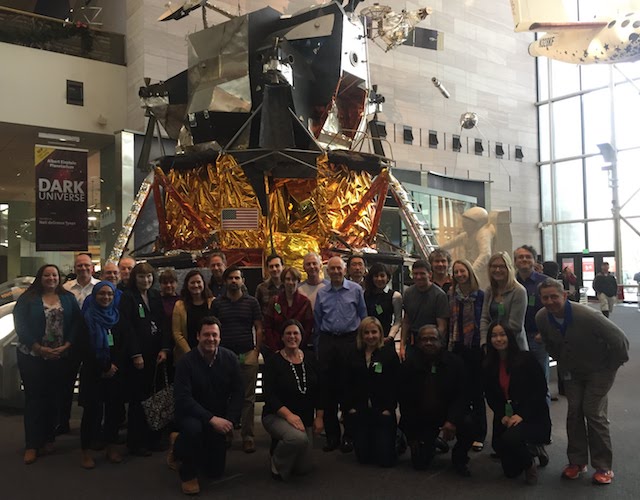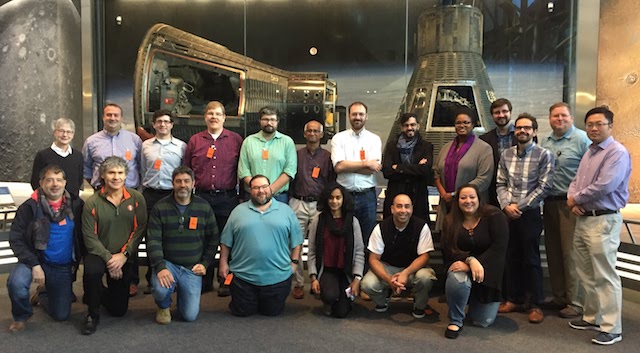
Pictured above are the 45 Mission 12 to ISS Step 2 Review Board members. In the top picture are the reviewers that participated on the first day of the review, November 30, 2017, in front of an engineering back-up Lunar Module. In the bottom picture are the reviewers that participated on the second day of the review, December 1, 2017, in front of the Mercury Friendship 7 capsule (at right) that carried John Glenn into orbit in 1962, and the Gemini IV capsule (at left) from which Ed White conducted the first U.S. space walk in 1965. Both pictures were taken in the Milestones of Flight Gallery at the Smithsonian National Air and Space Museum, Washington, DC.
The National Center for Earth and Space Science Education (NCESSE), and Arthur C. Clarke Institute for Space Education, are proud to introduce the National Step 2 Review Board for SSEP Mission 12 to the International Space Station (ISS). On November 30 and December 1 2017, the Board met at the Smithsonian National Air and Space Museum, in Washington, DC, to review 98 finalist proposals for student flight experiments submitted from across the network of 31 communities participating in SSEP Mission 12 to ISS. Listed below are the 45 Board Members—scientists, engineers, and science educators from academia, federal agencies, commercial entities, and national science education non-profits.
For Mission 12 to ISS, a total of 12,150 grade 5-16 students were formally engaged in designing microgravity experiments suitable for flight aboard ISS. At the conclusion of the 9-week experiment design phase, a total of 2,498 proposals were submitted by student teams, and 1,101 proposals were forwarded for review by SSEP Step 1 Review Boards in the communities. In 3 of the 31 Mission 12 communities, community leadership opted to fly 2 experiments.
For Step 2 review, the Board Members were divided into 11 teams, each comprised of both researchers and science educators, and each team responsible for review of proposals from 3 SSEP communities. Board Members selected 34 flight experiments, one for each of 28 communities, and two for each of the remaining 3 communities. The Board Members spent a great deal of time providing thoughtful comments for all 98 proposals, which were forwarded to the proposing student teams by NCESSE. The review went well beyond what is typical of reviews for professional research proposals given the deep recognition that the review process, and the comments back, were critically important teachable moments for the student researchers that worked so hard on their proposals. Through SSEP, we want to immerse students in real science. The review process is very much a part of real science, and that process therefore needs to be transparent and a learning experience.
NCESSE reviewed all comments from the Step 2 Review Board to assess if there were any outstanding questions that needed to be addressed by the selected student flight teams, and by December 14, 2017, NCESSE formally notified each community of their selected flight experiments.
You are invited to explore the selected flight experiments and honorable mention finalist experiments for Mission 12 to ISS.
A Note to All Mission 12 Student Research Teams
To the thousands of students that participated in SSEP Mission 12 to ISS, regardless of whether your proposal was selected for flight, and regardless of whether it formally went before a Review Board, it is important to recognize the endeavor in which you’ve been engaged – real science. This is how real research proceeds from opportunity, to defining a proposed research program, to submission of a proposal, to formal proposal review and selection. In the professional world, comments back from the Review Board allow a team to rethink and refine their proposed research, so they can submit a better proposal for the next opportunity. We have indeed had SSEP student teams that did not get selected for spaceflight the first time, but did get selected with a refined proposal as part of their community’s next flight opportunity.
Reflect on the overall experience, and recognize that you and your team owned this process – you came up with a microgravity experiment of interest to you, and designed it to fly in a research mini-lab that has a very real set of constraints on its operation. So get excited about what you’ve achieved, and get excited about science, technology, engineering, and mathematics (STEM). We challenge you to seek out new opportunities in STEM where you can be curious and take ownership … in the journey.
Finally, recognize that YOUR COMMUNITY now has an experiment destined for the International Space Station, that you are part of this historic adventure, and now you and your community can rally around your flight experiment and root for its success.
The SSEP National Step 2 Review Board for Mission 12 to ISS—
1. Naila Al Hasan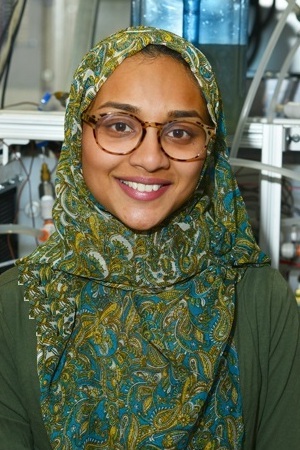
Graduate Assistant, Department of Materials Science and Engineering
University of Maryland, College Park
Naila Al Hasan is a graduate student and NSF fellow in the department of Materials Science and Engineering at the University of Maryland, College Park. Her doctoral research is focused on developing shape memory alloys for solid-state heating and cooling applications as an alternative to gas refrigerants that are potential pollutants. She is advised by Dr. Ichiro Takeuchi, a leading expert on synthesis of combinatorial thin film libraries and rapid characterization methodology to develop new electronic, magnetic and smart materials. Naila is passionate about creating access to science for young kids and particularly interested in the retention of women and girls across STEM fields. She has been serving as a mentor to local middle and high school students at FabFems.org since 2012.
2. Dr. Christopher J. Alexander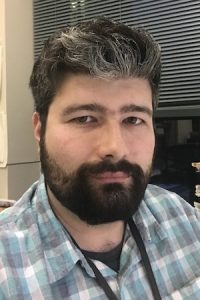
Postdoctoral Fellow, National Heart, Lung and Blood Institutes
National Institutes of Health
Chris obtained his BSc, MSc and Ph.D in Biochemistry from the University of Kent, Canterbury in the United Kingdom. After completing his Ph.D, Chris began a postdoctoral fellowship at the National Institutes of Health (NIH) in Dr. John Hammer’s group to investigate the role of myosin motors in cerebellar Purkinje neurons. These highly complex neurons are a key regulator of the cerebellum, which is responsible for motor coordination. These cells are covered in membrane protrusions, known as dendritic spines, which are the site of neuron activation. During Chris’s initial time at the NIH, he developed novel tools to investigate cerebellar Purkinje neurons in relation to various neurological disorders. Using these new tools, high-resolution microscopy, cell biology and biochemical approaches, Chris is investigating the role of two myosin motors, myosin Va and myosin 18A, and how they relate to dendritic spine function.
3. Doug Baldwin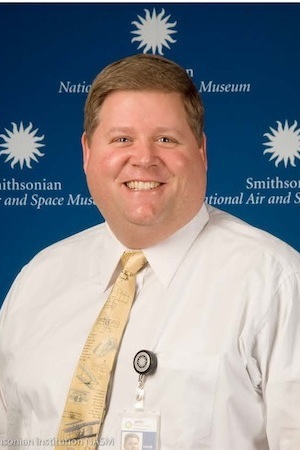
NASM Educational Specialist and Explainer Program Manager
Smithsonian National Air and Space Museum
Doug is in his 16th year with the Smithsonian National Air and Space Museum (NASM). He is the manager for the NASM Explainers Program, which allows diverse high school and college students to present educational programs at NASM. Previously Doug was NASM’s Chief of Education Initiatives, working with new and existing partners to integrate NASM resources into a variety of educational programs. Joining NASM in 2001, Doug was hired to lead the new education unit at the Udvar-Hazy Center (UHC), which opened in December 2003 for the 100th Anniversary of Flight. This facility near Dulles International Airport houses 80% of the NASM collection currently not on display. Doug attended the Florida Institute of Technology, where he earned an Army ROTC scholarship, obtained his BS in Space Science and MS in Management, and was commissioned a 2nd Lieutenant in the US Army Reserves. After two years of military service, Doug became a Space Academy Lecturer at the US Space and Rocket Center in Huntsville, AL. While working there, Doug found a passion for science education. In May of 2016, Doug earned his Master’s Degree in Education specializing in Instructional Design and Technology from George Mason University.
4. Dr. Matthew Bobrowsky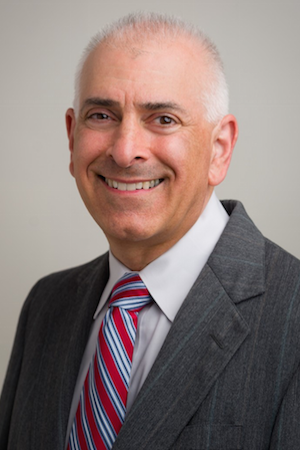
Adjunct Space Science Researcher, National Center for Earth and Space Science Education
Director of Special Programs, Delaware Institute of Science and Technology, Delaware State University
Dr. Matthew Bobrowsky is a nationally recognized science educator and recipient of multiple awards for teaching excellence. He is the lead author of the Phenomenon-Based Learning books for teaching physical science. Matt teaches various scientific subjects, carries out scientific research, and engages in numerous public speaking events. Currently at Delaware State University, recent experience includes serving as Director of the Physics Demonstration Facility at UMCP, a collection of 1,600 science demonstrations. Matt has also developed science curriculum materials and presented countless workshops to teachers and the public. His educational presentations address topics such as the process of science, misconceptions in science, effective science teaching, and science vs. pseudoscience. His public presentations on astronomy are entertaining and educational. As an astrophysicist, Matt’s research includes astronomical observations with many telescopes, including the Hubble Space Telescope. His specialty is the study of planetary nebulae – clouds of gas expanding outward from aging stars. One planetary nebula that he discovered is the Stingray Nebula.
5. Shaun Brinsmade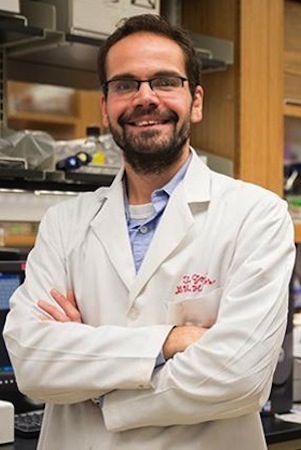
Assistant Professor, Department of Biology
Georgetown University
Shaun Brinsmade is a microbiologist and an assistant professor in the Department of Biology at Georgetown University in Washington, DC. His research lab is interdisciplinary in nature and uses cutting-edge and genome-wide methods to answer biological questions at the interface of metabolism and pathogenesis (the ability to cause disease) in Gram-positive bacteria. Currently, his lab is seeking to understand how a bacterium couples changes in intracellular abundance of key chemicals (metabolites) to changes in physiology and gene expression, including the expression of genes that direct the synthesis of factors that potentially damage the host. A major focus is the transcription factor CodY, which may act as a molecular switch that mediates the transformation from a harmless bacterium to one that causes disease. To learn more, visit www.brinsmadelab.com.
6. Xiutang Cheng, Ph.D.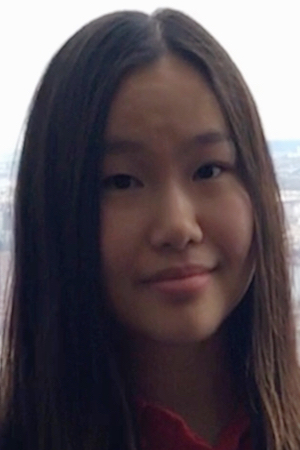
Research Fellow, National Institute of Neurological Disorders and Stroke
National Institutes of Health
Dr. Cheng received her M.D. from Shanghai Jiao Tong University School of Medicine in 2011 and continued on to receive her Ph.D. in Neuroscience from a joint program between NIH and Shanghai Jiao Tong University in 2016. She is currently a research fellow in Dr. Zu-Hang Sheng’s lab at the National Institute of Neurological Disorders and Stroke (NINDS). Her research focuses on mechanisms regulating the neuronal transport of organelles, including mitochondria, autophagosomes and endolysosomes, which is essential for the maintenance of synaptic functions and axonal homeostasis. To address how defective axonal organelle transport relates to common neurodegenerative diseases, such as amyotrophic lateral sclerosis (ALS), Huntington’s disease (HD) and Parkinson’s disease (PD), Dr. Cheng utilizes a broad range of approaches, including live-cell imaging, primary neuron culture, confocal and super-resolution microscopy and transmission electron microscopy (TEM) to track the dynamics of organelles as well as their ultrastructure in healthy and disease-modeled neurons.
7. Sindhuja Devanapally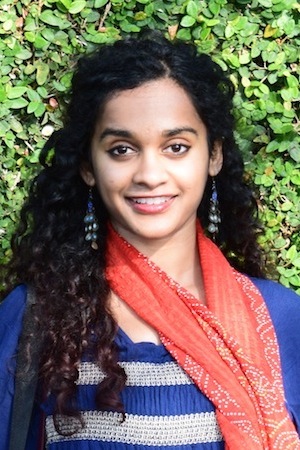
Graduate Research Assistant
University of Maryland, College Park
Sindhuja Devanapally is a graduate student of Cell Biology and Molecular Genetics at the University of Maryland, College Park. She is currently pursuing her PhD in Transgenerational Epigenetics and broadly, wants to understand how ancestral exposure of animals to varying environmental conditions can determine the behavior of descendants. She is interested in all things galactic and has been fascinated by the idea of space travel since childhood. Given these mix of interests, she is really excited by what spaceflight experiments designed by young scientists could produce to help generations of the future in space exploration.
8. Dr. Douglas Dluzen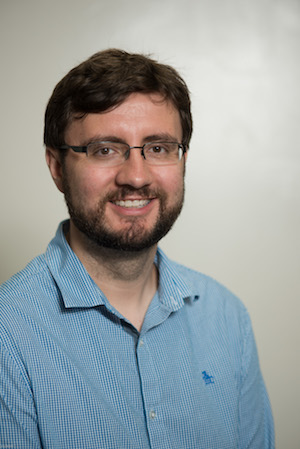
Assistant Professor, Biology Department
Morgan State University
Douglas Dluzen is an Assistant Professor of Biology at Morgan State University. His laboratory is focused on the intersection of human health disparities, aging, and the environment. He is interested in identifying biological and socioeconomic factors that influence health disparities in the community and their impact on healthy aging and age-related diseases. Doug primarily studies the role of non-coding RNAs in the biology of human aging and is working on identifying non-coding RNA biomarkers that can contribute to cardiovascular disease disparities in Baltimore City. He earned his B.S. in Molecular and Cellular Biology from the University of Illinois at Urbana-Champaign and Ph.D. in Genetics from the Pennsylvania State University Hershey College of Medicine. He was a post-doctoral research fellow at the National Institute on Aging. While at NIA, Doug examined differential gene expression by race and disease status in women with hypertension. He identified microRNAs involved in the regulation of pathways associated with inflammation and cardiovascular function. Additionally, he studied non-coding RNAs that are found in the blood and serum and profiled them to understand how they may change as humans grow older.
9. Dr. Daniel Dwyer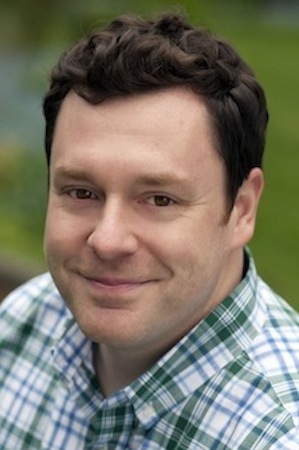
Assistant Professor, Department of Cell Biology and Molecular Genetics, Institute for Physical Science and Technology, Maryland Pathogen Research Institute
University of Maryland
Dr. Dwyer’s research interests are rooted in the study of dynamic events that occur during bacterial cell death and the influence of these events on antibiotic susceptibility. To address complex questions related to lethally stressed bacterial pathogens, the Dwyer Lab utilizes a broad complement of microbiology, bioengineering and chemical biology methods. Most notably, the lab applies synthetic and systems biology approaches to the identification and investigation of physiological vulnerabilities that appear under conditions of antibiotic stress in order to enhance our current antibiotic arsenal and resensitize drug resistant bacteria. Dr. Dwyer obtained his Ph.D. from the Molecular Biology, Cell Biology and Biochemistry Program at Boston University, following his B.S. in Biology from Boston College and two years in research and development at Forticell Bioscience, a tissue engineering company.
10. Seham Ebrahim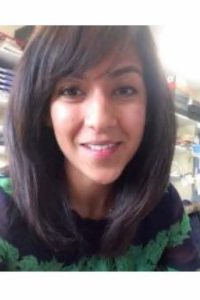
Research Fellow, Laboratory of Molecular and Cellular Biology
Center for Cancer Research, National Center Institute
National Institutes of Health
Seham is a Research Fellow in the Laboratory of Molecular and Cellular Biology in the Center for Cancer Research at the National Cancer Institute, National Institutes of Health. She is currently investigating the assembly, organization, function and disassembly of cytoskeletal components, specifically actin, myosin and septins, in vivo, using the process of regulated exocytosis in mouse salivary gland acinar cells as a model system. Her approach involves a combination of mouse genetics and imaging techniques ranging from intravital imaging and super-resolution light microscopy to electron microscopy.
11. Dr. José Feijó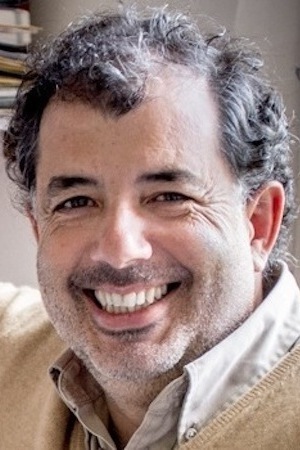
Professor, Department of Cell Biology and Molecular Genetics
University of Maryland
José is a Professor at the University of Maryland. He is a Plant Cell Biologist, focusing on reproduction and using the male gametophyte of plants as a model system to understand the fundamental properties of cellular growth, morphogenesis, and cell to cell communication. José uses a combination of live imaging, electrophysiology and genetics tools, and interfaces with biophysics by developing mathematical and computational models. He has been involved in a number of major initiatives for science vulgarization, including being the curator of one of the world largest exhibitions organized to commemorate Darwin’s bicentenary (“Darwin’s Evolution”) with the Gulbenkian Foundation, which included collaborations with the Natural History Museums of New York, London, Madrid, Paris, Berlin, etc. The exhibition toured 6 venues in 3 countries reaching close to 0.5 million visitors. He was a founding member and editor for Biology of “Casa das Ciencias”, a web portal dedicated to science educators and students in Portuguese (casadasciencias.org), which sponsors the adaptation of education materials to Portuguese, and publishes original educational materials. José has organized international courses and workshops on live imaging and Plant Development, and is involved in teaching plant biology and microscopy in the first BioMedical Ph.D. program in Portuguese speaking Africa, taking place at the University of Cape Verde.
12. Dr. Kenneth Frauwith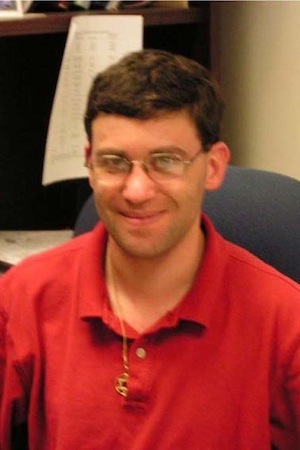
Lecturer, Department of Cell Biology and Molecular Genetics
University of Maryland
Dr. Frauwirth earned his bachelor’s degree in biochemistry from Brown University and his Ph.D. In immunology from the University of California at Berkeley. After post-doctoral research at the University of Chicago and the University of Pennsylvania, he joined the faculty of the Department of Cell Biology and Molecular Genetics at the University of Maryland, College Park. He performed immunology research at UMCP for 9 years, and currently teaches courses in general biology, cell biology, immunology, and vaccinology. His interest in spaceflight was born of a fascination with science and fueled by a love of science fiction. He grew up with the Space Shuttle and believes that the exploration of space is one of the most exciting aspects of the 20th and 21st centuries.
13. Talita B. Gagliardi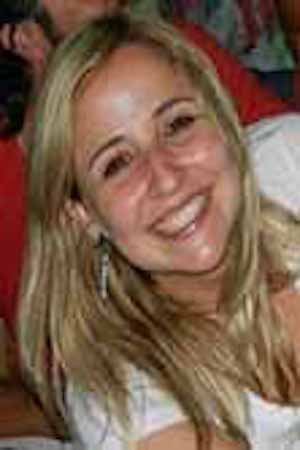
Research Assistant, Department of Cell Biology and Molecular Genetics
University of Maryland, College Park
Talita B. Gagliardi is Research Assistant at the University of Maryland College Park (UMCP), Department of Cell Biology & Molecular Genetics. She is Bachelor in Biomedical Science and Specialist in Clinical Analysis; and obtained her PhD. in Molecular and Cell Biology & Microbiology from University of São Paulo (SP, Brazil) in 2012. She worked as Postdoctoral Fellow in University of São Paulo (SP, Brazil; 2012-2016) and in Columbia University (NY, USA; 2013); and recently she started working in Dr. Margaret Scull’s team. Talita’s interests are studying about human respiratory viruses regarding their replication, genome variability and innate immune response. Several techniques are applied, including cell culture, immunofluorescence, immunohistochemistry, in situ hybridization, sequencing, reverse genetics, prokaryote and eukaryote protein expressions, Western blotting and metagenomics. She always looks forward to expand her contribution to Virology area, as collaborating in studies about animal viruses; and also in educational area.
14. Theresa M. Geiman, Ph.D.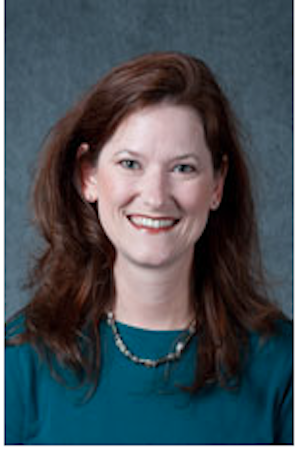
Assistant Professor, Department of Biology
Loyola University Maryland
Dr. Geiman completed her undergraduate studies in Biochemistry from McDaniel College, followed by a Ph.D. in Molecular and Cellular Oncology from The George Washington University. She performed her thesis research at the National Cancer Institute-Frederick, generating and characterizing a knockout mouse model of the Lsh/Hells chromatin remodeling gene. She continued her research training at the National Institute of Child Health and Human Development and the National Cancer Institute at NIH. Her research focuses on studying proteins involved in epigenetic mechanisms such as DNA methylation, chromatin remodeling, and histone modifications through the use of in vitro cell culture and in vivo mouse models. Of particular interest is the study of how altering the expression of these epigenetic genes, and therefore the packaging of the cellular DNA, is involved in the processes of early mammalian development, cellular differentiation, and cancer. She is involved in programs to encourage students to pursue careers in biomedical research, as well as those that enhance training for students interested in careers in cancer research.
15. Dr. Jeff Goldstein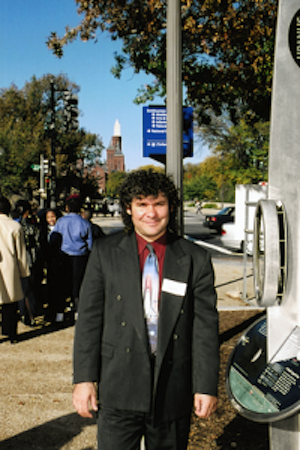
Program Director, Student Spaceflight Experiments Program (SSEP)
Center Director, Astrophysicist, National Center for Earth and Space Science Education (NCESSE)
Institute Director, Arthur C. Clarke Institute for Space Education
Dr. Jeff Goldstein is the creator of SSEP, and its Program Director. He is also the Center Director for the National Center for Earth and Space Science Education (NCESSE), and the Institute Director for the Arthur C. Clarke Institute for Space Education. Jeff is a nationally recognized science educator, and planetary scientist, who has dedicated his career to the public understanding of science and the joys of learning. He oversaw the creation of the Center’s national science education initiatives, including the Voyage National Program. He led the inter-organizational team that permanently installed the Voyage model Solar System on the National Mall in Washington, DC. He is a blogger at the Huffington Post, and writes Blog on the Universe. His planetary science research includes the development of techniques for measuring global winds on other planets using large telescopes on Earth. His research has produced the first direct measurement of the global winds above the clouds on Venus, and the first measurement of the global winds on Mars.
16. Benjamin Goodman, Ph.D.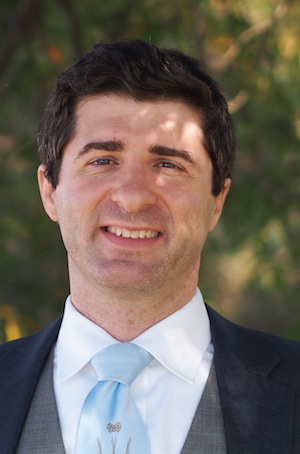
Senior Scientist
NASA Research and Education Support Services
Ben Goodman is a peer review administrator for NASA whose work currently focuses on program contained within the Human Exploration and Operations Mission Directorate and the Space Technology Mission Directorate. He has been a peer review administrator for five years, and has gained a familiarity with a wide variety of NASA programs and research portfolios while recruiting and serving as referee for many panels and solicitations, especially those dealing with NASA life sciences programs. Before working for NASA, he performed research on mitotic spindle assembly in Xenopus and cell culture while at Johns Hopkins University, where he received his Ph.D. in Cell Biology, and also served as a post-doctoral researcher at the NIH.
17. Carlos M. Guardia, Ph.D.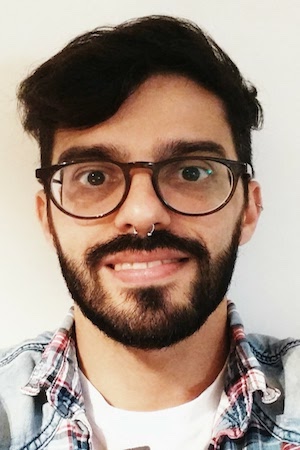
Postdoctoral Fellow
Eunice Kennedy Shriver National Institute of Child Health and Human Development (NICHD)
National Institutes of Health (NIH)
Charly obtained his BS, MS and PhD in Chemistry from University of Buenos Aires, Argentina. Currently, he is a senior postdoctoral fellow at the National Institutes of Health (NIH), in Bethesda, Maryland in Dr. Juan Bonifacino’s group. During his first years at NIH, he studied the key aspects of organelle (lysosomes and mitochondria) transport driven by motor molecules (kinesins and dynein), not only in non-polarized cells but also in neurons. Now, he is actively working on a novel approach for controlling the positioning of different organelles within the cell, using engineered kinesins that can reversible detach from its cargo. With these tools, he is trying to understand the molecular mechanisms of intracellular traffic and provide insights into the neurodevelopmental disorders where these proteins have failed to work properly.
18. John Hamel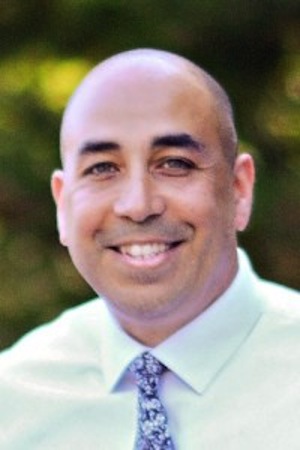
Flight Operations Manager, Student Spaceflight Experiments Program (SSEP)
Education Program Manager, National Center for Earth and Space Science Education (NCESSE)
John is the Education Program Manager at the National Center for Earth and Space Science Education. He provides logistics and coordination support for NCESSE’s various programs, including SSEP, Family Science Night and Voyage. As the SSEP Flight Operations Manager, John provides logistics support for all phases of flight operations, as well as website content development, coordination support for the annual SSEP National Conference, organization of SSEP delegations attending a mission launch, and overseeing the Mission Patch design competitions for each SSEP Mission. John also has extensive experience with non-profit education organizations and a certified association management group. He spent the early years of his career working directly with pre-school and school-aged children.
19. Stacy Hamel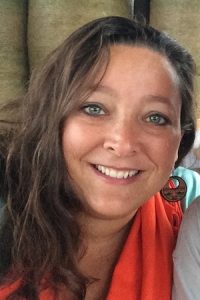
Senior Flight Operations Manager, Student Spaceflight Experiments Program (SSEP)
Senior Education Program Manager, National Center for Earth and Space Science Education (NCESSE)
Stacy Hamel is the Senior Flight Operations Manager for the Student Spaceflight Experiments Program overseeing all day-to-day activities from the time flight proposals are submitted by the communities through experiment return to Earth. Her previous experience at NCESSE includes co-directing the Voyage National Program – a national public education and outreach program that is installing replicas of the Voyage Scale Model Solar System located on the National Mall in Washington, DC, in communities worldwide. Stacy also co-directed many of the Center’s other Educational Programs including Journey through the Universe – a national initiative that engages entire communities—students, teachers, families, and the public—using education programs in the Earth and space sciences and space exploration that inspire and educate. Over 200,000 grade preK-12 students have participated in Journey through the Universe.
20. Ann Hobbs
Biochemist and Patent Attorney (retired)
Ann Hobbs holds a Ph.D. in Biophysics from the University of Maryland at Baltimore, and devoted a number of years to biochemical and physiological research on cation transport across cell membranes. A large part of her scientific career was spent at the National Institutes of Health and the University of Maryland Medical School. Dr. Hobbs subsequently earned a J.D. from the University of Maryland School of Law and became a patent attorney, her legal practice focusing on medical, biotechnological and pharmaceutical inventions. She is a former partner of Venable LLP, Washington, D.C.
21. Mike Hulslander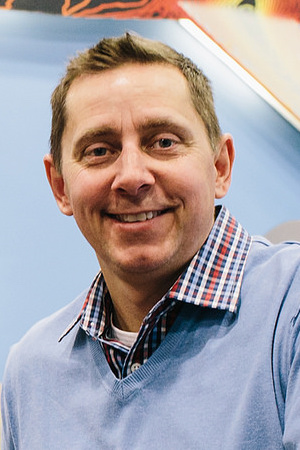
Adjunct Space Science Educator, National Center for Earth and Space Science Education
How Things Fly Manager, Smithsonian National Air and Space Museum
Mike is responsible for STEM education in the Museum’s How Things Fly gallery, which teaches visitors about the science of flight. Mike is also very involved in exhibition development at the Museum. Mike has worked in museums and zoos for more than 26 years, researching, writing, presenting and evaluating STEM programs for school groups, educators, families, and the general public.
22. Rosemarie Hunziker, Ph.D.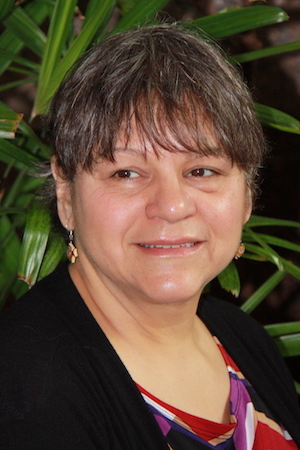
Director, Tissue Engineering and Regenerative Medicine
National Institute of Biomedical Imaging and Bioengineering (NIBIB)
National Institutes of Health (NIH)
Rosemarie is the Director of Tissue Engineering and Regenerative Medicine at the National Institute of Biomedical Imaging and Bioengineering (NIBIB) within the National Institutes of Health in the US Department of Health and Human Services. Dr. Hunziker has education and training in microbiology, immunogenetics and immunochemistry, developmental biology, animal husbandry, molecular biology, tissue engineering, biomaterials, and technology transfer. Rosemarie’s professional career in the research laboratory evolved into setting up the NIAID’s Transgenic Mouse Facility at the FCRDC in Fort Dietrick, MD. She joined the Advanced Technology Program at the National Institute of Standards and Technology as a Program Director in the Chemistry and Life Sciences Office. After a stint in private consulting advising biotechnology companies on strategic use of federal research grants to advance their business goals, Rosemarie returned to NIH in 2004 to help modernize the Dental Materials Program and accelerate technology transfer at the National Institute of Dental and Craniofacial Research. In January 2007, she moved to her current position at the NIBIB. She is committed to realizing the benefits of the exciting developments at the forefront of cell-based tools and therapies.
23. Dr. Jungho Kim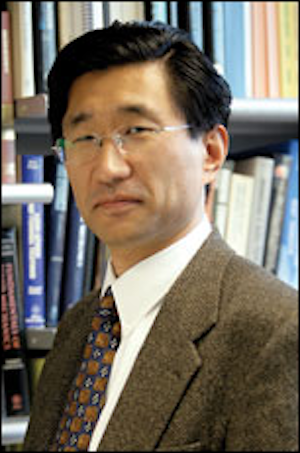
Professor of Mechanical Engineering
University of Maryland
Prof. Jungho Kim is a Professor of Mechanical Engineering at the University of Maryland. His research interests include phase change heat transfer process as applied to electronic cooling; investigation of fundamental heat transfer mechanisms in boiling and spray cooling in Earth and microgravity environments; and high temperature radiation absorbance measurements. Prof. Kim has extensive experience in microgravity research, including his role as the principal investigator of the Boiling eXperiment Facility – Microheater Array Boiling Experiment (BXF MABE), which flew on the International Space Station in 2011.
24. Juliette Lecomte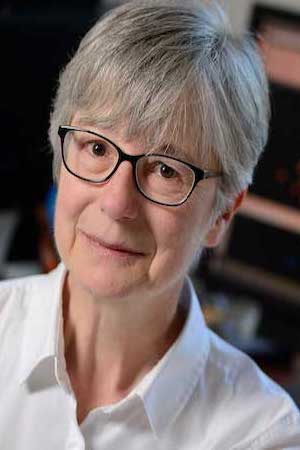
Professor, Department of Biophysics
Johns Hopkins University
Juliette Lecomte is a Professor in the T.C. Jenkins Department of Biophysics in the School of Arts and Sciences at Johns Hopkins University in Baltimore. She is a physical chemist by training and specializes in the application of nuclear magnetic resonance spectroscopy to proteins. Her research interests include the molecular evolution of the hemoglobin superfamily. Currently, her group seeks to understand the thermodynamic and dynamic principles underlying adaptation to extreme environments, specifically those encountered by deep-sea unicellular organisms.
25. Dr. Jeff Leips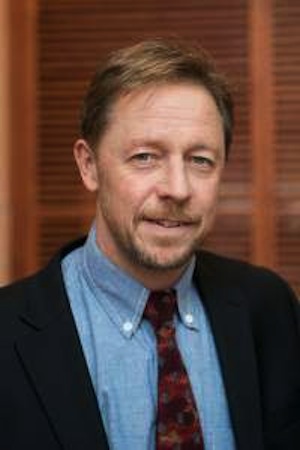
Professor, Department of Biological Sciences
University of Maryland Baltimore County
Our research is focused on understanding the genetic basis of natural variation in life history traits using the fruit fly, Drosophila melanogaster, as a model organism. We are particularly interested in identifying genes that control age-specific changes in traits that directly contribute to senescence and ultimately limit life span. These traits include age-specific reproduction, immune response and energy storage. We are also actively studying the ecology of natural populations of Drosophila to identify the agents of selection acting on genes controlling these traits. Our goal is to combine knowledge of the natural history of this species with an understanding of the genetic architecture of these traits to help explain the maintenance of genetic variation in age-related changes in fitness in natural populations. For more information on our research follow this link: http://biology.umbc.edu/directory/faculty/leips/leips-lab/
26. Dr. George Liechti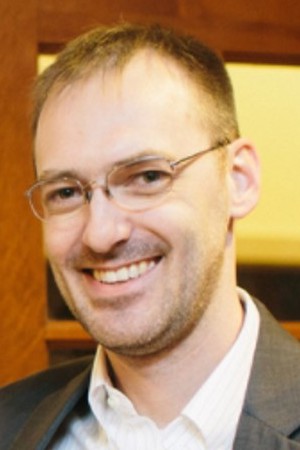
Assistant Professor, Department of Microbiology and Immunology
Uniformed Services University
Dr. Liechti obtained his PhD in Microbiology, Immunology, and Cancer Biology from UVA before joining the Department of Microbiology and Immunology at Uniformed Services University (USU), initially as a postdoctoral fellow, and subsequently as an assistant professor. His research interests focus on cell division, cell wall (peptidoglycan) biosynthesis / degradation, nutrient acquisition and persistence mechanisms in a number of clinically relevant bacterial pathogens, including Chlamydia trachomatis and Borrelia burgdorferi. His research group utilizes a variety of tools, including visualization (super resolution microscopy), biochemical, and genetic approaches to investigate how some pathogens have become dependent on us to meet their most basic metabolic needs as a result of millions of years of co-evolution with their human hosts. Identifying how microbes respond to stress is important when investigating human pathogens. A major goal of Dr. Liechti’s research is to determine the mechanism(s) by which bacteria can overcome the effects of stress (resulting from antibiotic treatment or host cell cytokines) in order to help develop the next generation of therapeutics against highly prevalent, human-adapted bacterial pathogens.
27. Dr. David Livengood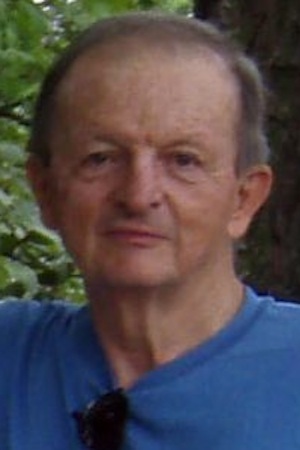
Dr. David Livengood is a biophysicist with a Ph.D. in Physiology. He has an extensive research background in biophysics in institutions such as the University of Maryland School of Medicine in Baltimore, Maryland, and the Armed Forces Radiobiology Research Institute in Bethesda, Maryland, where he served as the chair of the Physiology Department and the Applied Cellular Radiobiology Department.
28. Hernan A. Lorenzi, Ph.D.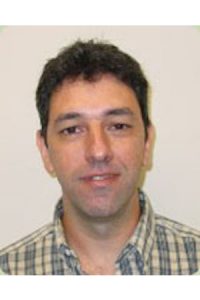
Assistant Professor
J. Craig Venter Institute
Hernan Lorenzi is an Assistant Professor in the Bioinformatics Department. His research is focused on the use of genomic, transcriptomics and metagenomic approaches to study evolution, diversity and host-pathogen/microbiome interactions of protozoan, viral and bacterial organisms relevant to human health. His lab is studying the role of genome diversity and human microbiome in host-pathogen interactions and protective immunity in Toxoplasmosis and Malaria. In addition, his team is studying the interplay between host genetics, the environment and the human microbiome by looking at the impact of human genome diversity, long-term space travel and different kind of diets on the human microbiome and health. In 2011 he was awarded a grant from NASA to investigate how long-term space travel affects the biodiversity of the population of microorganisms that inhabit inside and outside the body of astronauts (microbiome). Dr. Lorenzi received his Ph.D. in Parasite Genomics and Molecular Biology from the University of Buenos Aires in Argentina in 2001, and was a postdoctoral fellow at Johns Hopkins University.
29. Anthony LoRusso, CCDS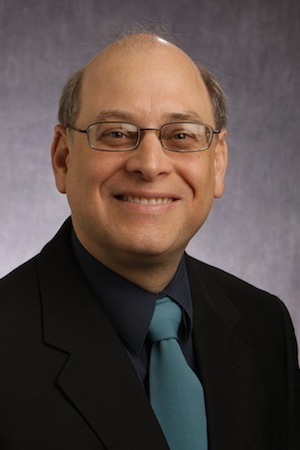
Systems Engineer
Orbital ATK
Anthony LoRusso is a systems engineer at Orbital ATK and a member of their local STEM Council. Twice a graduate from Drexel University, Anthony earned both a Bachelor of Science in Mechanical Engineering degree and a Bachelor of Science degree in Humanities and Communications. While at Drexel, he led Engineering student activities which included inviting and hosting the Administrator of the National Aeronautics and Space Administration (NASA). He has spent over twenty-five years with aerospace and defense technologies company Orbital ATK. Anthony is steadfastly dedicated to promoting STEM education and has organized various events and programs for grades K-12 at rural and urban schools. He is a long-time member of the Board of Directors of the Delaware AeroSpace Education Foundation (DASEF). He has judged engineering competitions sponsored by the Navy for middle and high schools at both regional and national levels, including regionally judging project engineering notebooks.
30. Dr. Todd Miller
Associate Professor, Department of Exercise and Nutrition Sciences
Director, Weight Management & Human Performance Lab
Milken Institute School of Public Health, George Washington University
Todd A. Miller is an Associate Professor in the Department of Exercise and Nutrition Sciences at the George Washington University Milken Institute School of Public Health. Dr. Miller is an internationally renowned expert in Strength Training for athletic performance and health. His early focus on the influence of strength training on athletic performance evolved into an interest in how human beings respond to long-term space travel. To learn more, Dr. Miller has used animal models to investigate the deleterious effects of microgravity on physiology, and how those effects can be countered, and played an integral role in a multi-year NASA project that included flying an experiment on the ill-fated Columbia shuttle in 2003.
31. Dr. Terry Pellmar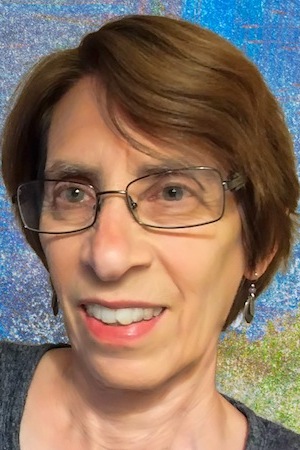
Dr. Terry Pellmar has contributed to a wide range of research projects and policy studies over her 30+ year scientific career. She started out as a research neuroscientist at the Armed Forces Radiobiology Research Institute (AFRRI) with an interest in the effects of radiation on neural function. Between 1999 and 2002 she went to the Institute of Medicine, National Academy of Sciences to direct health policy setting studies on neurologic and mental disorders, substance abuse, and behaviors impacting health. Terry returned to AFRRI in 2002 as Scientific Director to oversee the institute’s research program on development of radiation countermeasures and biodosimetric assessment. At the same time, she was Professor and Chair of the Radiation Biology Department at the Uniformed Services University of the Health Sciences. In 2009 she retired but continues to consult and to serve on advisory panels. For the past several years, Terry has been sharing her excitement for science with elementary school students as volunteer with the AAAS/SSE STEM program.
32. Dr. Saroj Pramanik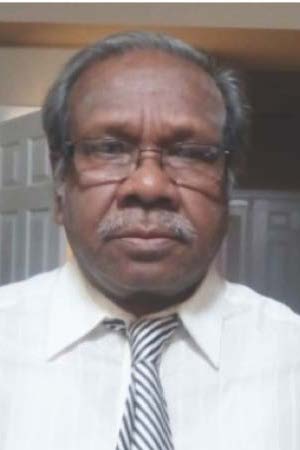
Associate Professor, Department Biology
Morgan State University
Dr. Pramanik’s research uses wide varieties of Biological Systems and several molecular tools. His primary area of research interest is Regulation of Protein Synthesis during Cellular Differentiation. He isolated couple of unique cDNA clones which are published in peer reviewed journals. His Alfalfa Ubiquitin Carrier Protein (E2) is in the MyBiosource Com catalogue (# MBS 1093121). Dr. Pramanik’s other research interest is on somatic embryogenesis of plants. Any segment of the plant can be induced to generate an embryo, which are as good as a normal seed. This technique is known as artificial embryos. At Morgan State University, Dr. Pramanik’s lab is working on Bioremediation of Toxic Chlorinated Chemicals (PCBs, Triclosan, DDT, etc.) using Nano-Phytotechnology and Plant-Microbial Interactions and on Rhenium-based Anticancer Drug Development (with collaboration). Dr. Pramanik received his bachelors’ degree in Agriculture (BCKV, WB, India), MS and Ph.D in Biochemistry (Indian Agricultural Research Institute, New Delhi, India), and postdoctoral research work on Myoblast Differentiation at Memorial University of Newfoundland, and Somatic Embryogenesis of Alfalfa plant at University of Guelph, Canada.
33. Dr. Marco A. Riojas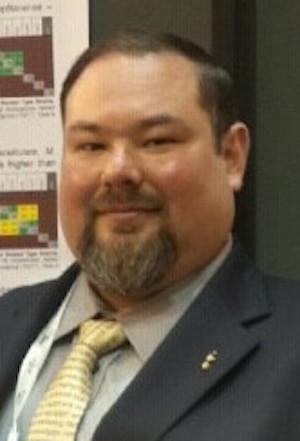
Scientist, Biodefense and Emerging Infections (BEI) Resources
American Type Culture Collection (ATCC)
Marco A. Riojas obtained his BS in Biology from the Massachusetts Institute of Technology (MIT), his MS in Biology from the University of Texas at San Antonio (UTSA), and his PhD in Biodefense from George Mason University. His dissertation research examined bioaerosol dispersal models and the in silico design of a synthetic strain of Bacillus subtilis for use in biodefense research. His recent research efforts have been focused on the development of new assays for detection and characterization of bacterial BSL-3, BSL-2, and Select Agent pathogens, most notably Bacillus anthracis, the etiologic agent of the disease anthrax. His current research uses next-generation sequencing (NGS) to examine the phylogenetic relationships between the species of the genus Mycobacterium. Marco also serves as an assistant adjunct professor at the University of Maryland University College, where he teaches a graduate-level biotechnology course.
34. Courtney J. Robinson, Ph.D.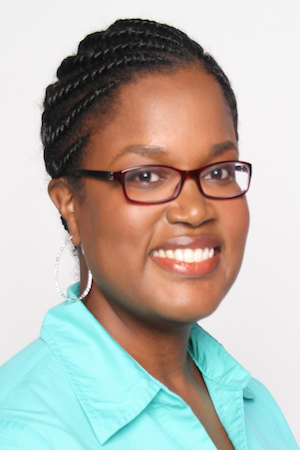
Associate Professor of Biology
Howard University
Courtney J. Robinson is an Associate Professor of Biology at Howard University. She earned a B.S. in Microbiology from Xavier University of Louisiana, and a Ph.D. in Microbiology from the University of Wisconsin – Madison. From 2008-2011 she was a postdoctoral fellow at the University of Michigan – Ann Arbor. Her research explores the role of the gut microbiota in insect health and transmission of disease, as well as microbial communities associated with abiotic hosts. She is the director of the Science Education Alliance – Phage Hunters Advancing Genomics and Evolutionary Science course at Howard. Courtney is also the recipient of two subcontracts from the Department of Energy, through which Howard students conduct research in collaboration with Pacific Northwest National Laboratory. As co-PI of the NSF-funded Howard University Science Teacher Certification Program, she also is helping to develop a program to certify Biology and Chemistry majors to teach science in DC Public Schools.
35. J. Reid Schwebach, Ph.D., Ed.M.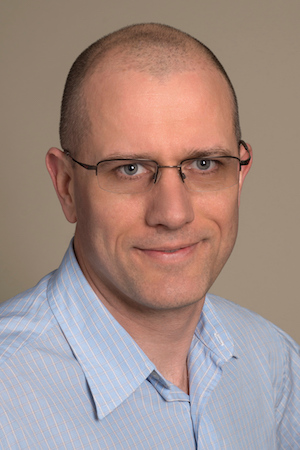
Accelerator Program Faculty, Biology Department, College of Science
George Mason University
Dr. Schwebach is a faculty member of the Biology Undergraduate Program, Coordinator of High School Outreach and Recruitment for The College of Science, and founding Coordinator of The Governor’s School at Innovation Park, a dual-enrollment public high school at Mason. He received his PhD in microbiology and immunology from the Albert Einstein College of Medicine. He holds Ed.M. (secondary science education) and M.A. (international education development) degrees from Teachers College, Columbia University. He has a BA in agriculture and a BS in biochemistry from New Mexico State University. Before coming to Mason, he worked for the Board on Science Education at The National Research Council. From 2007-2008, he was an American Association for the Advancement of Science sponsored Science and Technology Policy Fellow at the National Science Foundation, in The Division of Research and Learning. In the NYC public school system, he taught high school chemistry and independent student research at The Beacon School. His scientific research focused on the immunology of M. tuberculosis, the bacterial pathogen that causes tuberculosis. At Mason, he is helping to develop a new undergraduate curriculum in bioinformatics, teaches phage ecology undergraduate research, and is involved with several NSF projects.
36. Dr. Margaret Scull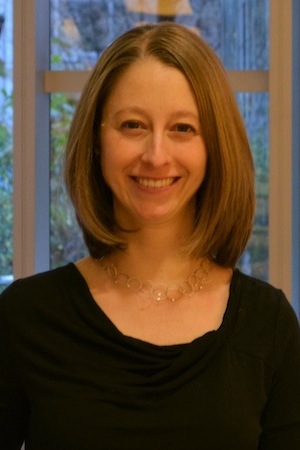
Assistant Professor, Department of Cell Biology and Molecular Genetics
University of Maryland, College Park
Margaret Scull obtained her Ph.D. in Microbiology and Immunology from the University of North Carolina at Chapel Hill in 2009. After completing her post- doctoral research at the Rockefeller University, she joined the faculty at the University of Maryland – College Park as an Assistant Professor. Dr. Scull’s lab works at the interface of virology and cell biology. Specifically, her research focuses on virus-host interactions in the airway epithelium – the primary target for infection by influenza virus and other clinically relevant respiratory viruses. Her research uses a variety of tools, including microscopy, deep sequencing technology, viral genetics, and in vitro primary cell model systems to understand mechanisms of host restriction and innate defense against viral infection. In addition to her work in the lab, Dr. Scull has been active in science education Outreach, including after school mentoring in STEM education and volunteering as both an educator on the BioBus mobile laboratory and as a judge at science fair competitions in the New York City area.
37. Dr. Daniel Serrano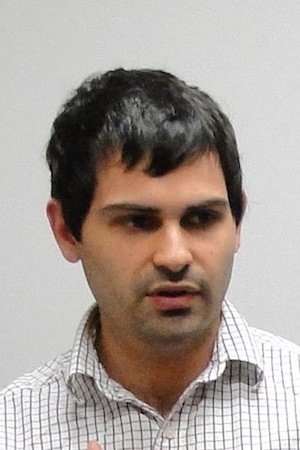
Faculty Specialist, Institute for Research in Electronics and Applied Physics (IREAP)
University of Maryland
Daniel Serrano is a Faculty Specialist at the University of Maryland College Park (UMCP) Institute for Research in Electronics and Applied Physics (IREAP), where he works in program administration, grant proposal advising/mentoring, and science outreach initiatives. He completed a B.S. in Biochemistry at Virginia Tech and an M.S. in Cell Biology and Molecular Genetics (CBMG) at UMCP. During his PhD work in the Biological Sciences program at UMCP, Daniel studied the optimization of targeted therapeutic delivery using nanocarriers and also the interactions between blood clots, blood cells, and the walls of blood vessels. In his current role at UMCP, Daniel works with the Cell Biology and Molecular Genetics (CBMG) Department to organize a University System of Maryland SSEP community. He has been Community Program Director in USM’s Mission 10, 11 and 12 to ISS.
38. Dr. Michelle Starz-Gaiano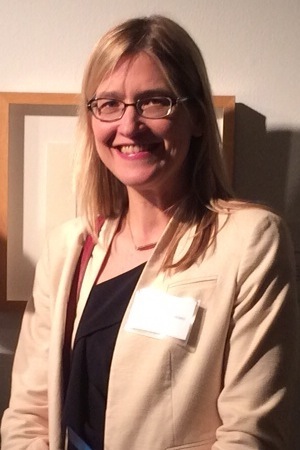
Associate Professor, Department of Biological Sciences
University of Maryland Baltimore County
Dr. Starz-Gaiano investigates the genetic control of animal development. In particular, her studies focus on understanding how cells adopt different identities and move through complex environments. She uses the vast genetic tools developed in fruit flies to identify new molecules involved in these processes. Interestingly, many of the same genes that regulate development in flies are required in the development of other animals, including humans. Currently, much of the work from her research group focuses on the regulation of the Janus Kinase and STAT molecular signaling pathway. Dr. Starz-Gaiano earned a bachelor’s degree from MIT, a PhD from NYU, and completed postdoctoral work at Johns Hopkins Medical School before starting at UMBC in 2008.
39. Shaolei Teng, Ph.D.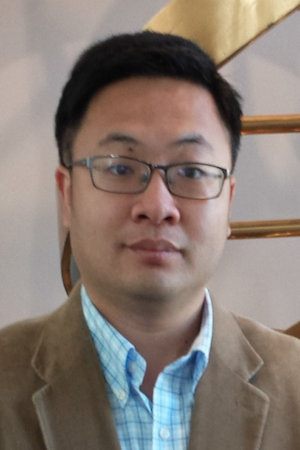
Assistant Professor, Department of Biology
Howard University
Dr. Teng received his PhD in Biochemistry and Molecular Biology from Clemson University, and completed his postdoctoral training in Bioinformatics and Genomics at Cold Spring Harbor Laboratory. Dr. Teng’s research interests are to develop and apply bioinformatics approaches for analyzing the genetic variations associated with human diseases and discovering biological knowledge hidden in the massive data sets. His group at Howard University is currently focused on three research areas including next-generation sequencing, machine learning and protein structure modeling. Dr. Teng is active in education including volunteering as a science fair judge, teaching bioinformatics courses, and mentoring graduate and undergraduate students. Learn more about Dr. Teng by visiting his webpage at: http://www.biology.howard.edu/home.html.
40. Alex Theos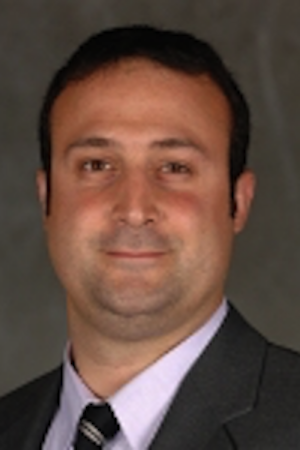
Associate Professor
Georgetown University
Alex Theos is an Associate Professor at the Department of Human Science in the School of Nursing And Health Studies at Georgetown University. His research interests include the biogenesis of specialized organelles, focusing on the intracellular membrane trafficking pathways. Currently, his research lab is working to understanding the cell biology of the GPNMB protein, which is associated with diverse pathologies including melanoma and pigmentary glaucoma.
41. Dr. Hemayet Ullah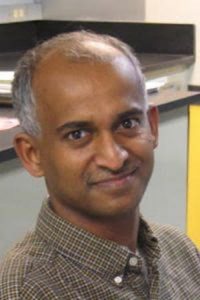
Associate Professor, Department of Biology
Howard University
Dr. Hemayet Ullah is an Associate Professor at the Department of Biology in Howard University. His research interests are in the field of plant biology, especially plant cell signaling, environmental stress physiology, and plant molecular and cellular biology, with current emphasis on unraveling the signaling pathways of extracellular signals inside the cell.
42. Dr. Harri Vanhala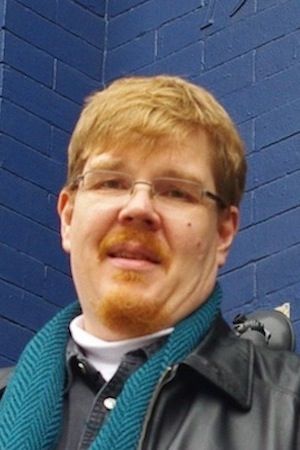
Adjunct Space Science Researcher, National Center for Earth and Space Science Education
Senior Scientist, Arctic Slope Technical Services
Originally from Finland, Harri received his Ph.D. in astronomy from the University of Oulu. Harri has worked in various research and education organizations in the Unites States for 20 years. He is a Senior Scientist at Arctic Slope Technical Services, where he works with NASA’s Space Technology and Human Exploration and Operations Mission Directorates to help select new space technology projects for development and experiments for flight to the International Space Station. His science research focuses on the use of computer simulations to investigate the origin of the Solar System and the formation of stars and planetary systems across the Universe. His science education activities have included hundreds of visits to grade K-12 classrooms, conducting teacher training workshops, teaching college courses, and presentations to families and the public—he is one of the presenters for the Center’s Family Science Night program at the Smithsonian National Air and Space Museum.
43. Kirsten Weimer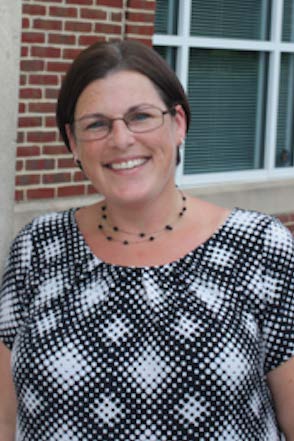
Education Program Coordinator
National Center for Earth and Space Science Education (NCESSE)
Kirsten is the Education Program Coordinator at the National Center for Earth and Space Science Education, joining the team in November 2017. She provides administrative support for NCESSE’s various programs, including SSEP. Kirsten has extensive experience working in higher education, previously working at the University of Virginia and the University of Richmond. Her most recent position was supporting programs and fundraisers in University Advancement at UVA.
44. Jake Weissman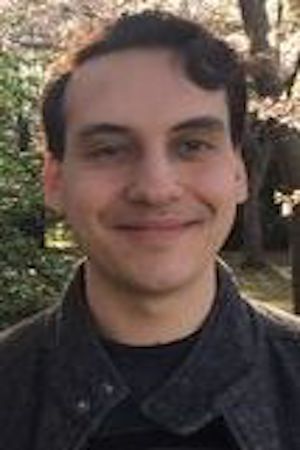
Graduate Assistant, Biological Sciences Graduate Program
University of Maryland
Jake Weissman is a graduate student in the Behavior, Ecology, Evolution, and Systematics specialization of the Biological Sciences Graduate Program at the University of Maryland College Park. His work is centered on the never-ending battle between bacteria and their viral predators and how bacteria tune their defenses to fit the pathogenic environment around them. He is advised by Drs. Bill Fagan and Philip Johnson, who both have primarily theory-driven labs and largely focus on building statistical and mathematical models of ecological and population genetic phenomena. Jake has been involved in outreach programs since his time as an undergraduate where he ran his college’s math circle for middle school students and has spent time working with the Bridge to Enter Advanced Mathematics.
45. Dr. Kol Zarember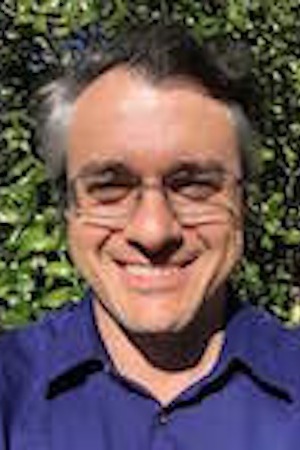
National Institute for Allergy and Infectious Diseases
National Institutes of Health
Kol Zarember obtained his PhD from the New York University School of Medicine and performed postdoctoral research at Genentech, Inc. before joining the Laboratory of Host Defenses located in the nation’s largest dedicated research hospital, the National Institutes of Health Clinical Center. Dr. Zarember’s research interests focus on the recognition of microbes by the human immune system and on innate antimicrobial mechanisms that have evolved to counter pathogen invasion. Through studying patients with various rare genetic alterations in immunity, he works to better understand how neutrophils, the most abundant white blood cell in the circulation, prevent infections and contribute to other aspects of inflammation and human biology.

